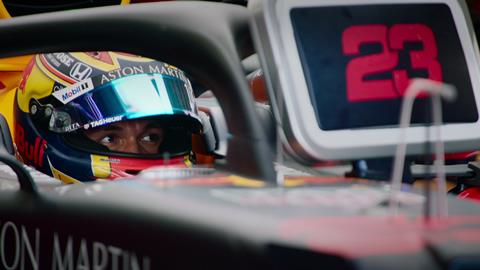Nicolas Avila, CEO of Globant’s media & entertainment AI studio, looks at how its partnership with F1 has yielded results in content

Formula 1 is in the midst of remarkable growth. Global hits like Drive To Survive and the F1 movie have taken the sport far beyond traditional race weekends, turning it into a cultural phenomenon and fueling record revenues, profits, and audiences.
How does a major sporting competition become a global entertainment phenomenon without compromising what makes it special? For Formula 1, the answer lies in everything that has changed around the racing. While focusing on peak sporting performance and team optimisation, it has also channeled investment into technologies that enhance how stories are told, how fans follow the action, and how the organisation keeps people engaged between one Grand Prix and the next.
Personalisation powering the F1 experience
For years, watching a race meant accepting a single TV feed and a single storyline. Today, fans can build their own version of the Grand Prix.
Global viewers can now customize how they watch, switching between cars, selecting camera angles, viewing live race data, or replaying highlights of their favourite drivers. Extended reality platforms, such as those supported by Apple Vision Pro, are taking this even further, offering immersive new ways to bring fans closer to the cockpit, the pit wall or even the paddock.
Formula 1 can now cater to diverse audiences worldwide with content that adapts to individual preferences, suggesting which battles to follow or surfacing highlights you may have missed. In doing so, it stops offering “one broadcast to millions” and starts providing “millions of tailored experiences”, where fans don’t just watch the race, they curate it.
From spectators to participants
In the era of on-demand content, Formula 1 fans don’t want the conversation to end at the chequered flag. They now expect constant connection, from behind-the-scenes stories to direct interaction with teams and drivers, in order to really feel part of the action.
Formula 1 is tapping into this phenomenon by building an ecosystem around its fans and creating a unified experience across digital and physical touchpoints. Live timing apps, fantasy leagues, prediction games, simulators, social content and interactive streams keep fans involved long after the podium ceremony. What was once a two-hour appointment viewing has become an ongoing storyline that stretches across platforms and formats.
The important shift is that fans have gone from passive viewers to active participants. They comment, vote, predict, react and share. From AI-powered recommendations to gamified features, technology makes it easier for the sport to listen and respond in real time, shaping content and experiences around how people actually behave.
When this works, it creates emotional connection at scale. Fans don’t just follow F1; they feel like they belong to it. That is what turns a casual viewer into someone who will stay with the sport for years.
Fan engagement as a growth engine
Some sports still treat fan engagement as something that sits on top of broadcast rights and sponsorships. Formula 1 is treating it as a core driver of growth.
The organisation is increasingly operating like a media company, building a connected experience that spans TV, apps, live events and social networks. Every touchpoint becomes an opportunity to better understand and reach its audience, whether it’s a teenager playing on a simulator at home, a family watching the race together, or VIP guests in the paddock.
With that understanding comes the ability to offer more relevant content and experiences to each type of fan, and to develop new revenue streams that go beyond ticket and merchandise sales to include exclusive digital content, virtual events or interactive formats. At every step, the data from these interactions is analysed to refine communication and always-on marketing. The result is a model where engagement does not just support the sport; it fuels its growth.
This evolution mirrors the shift from traditional TV advertising to streaming’s precision targeting, enabling brands to reach specific audience segments with unprecedented accuracy and boosting revenues significantly. In doing so, F1 can set itself apart from many other global sports, where limited fan experiences often block both engagement and commercial potential.
The road ahead
What Formula 1 is doing today will not stay in Formula 1. The same ingredients can help any league, club or federation rethink how it connects with its audience. The opportunity is to think beyond individual drivers or teams and focus on the whole experience: for athletes, broadcasters, partners and, above all, fans.
Those who use technology to make sport feel more personal and more human will set the pace for the next generation. As Formula 1 is showing, when you get fan engagement right, the whole ecosystem moves faster.

Nicolas Avila is CEO of Globant’s media & entertainment AI studio





No comments yet